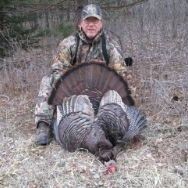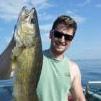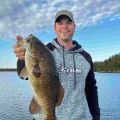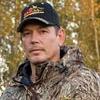OutdoorMN News - Higher deer harvest predicted; hunter expectations up, too
-
Your Responses - Share & Have Fun :)
-

By leech~~ · Posted
Just another "Words matter" Voting on school levy. This was posted on the School "education district" building door. We had a nice cold walk all the way around the building! The arrow was added, after we educated them! 😒 -

-

By smurfy · Posted
I don't need no livescope to catch fish....🤔🤪 It's all in how ya wiggle the worm!😜 Just sayin 🤣 -

By Kettle · Posted
Obviously this is more of a hot topic due to forward facing sonar. With that being said, I know people who have pulled crappies out of basins 40+ deep since the fl-8 and zercom flashers came out. That's over 30 years ago. I do think there's a push to ban these in MN and I could see them doing it here. They'll have to pay my livescope from my cold dead hands 😆 on days I can't catch a walleye jigging or rigging it's nice to turn it on and throw corks at individual fish -

By Kettle · Posted
It wasn't just you, I was fishing west of you about an hour on Monday. Fished 8am-4pm, no fish, two keeper walleye and one small one from 4pm-630pm. Marked a lot of fish, they would come up to a jig and swim away. They were skittish to the dead stick too -

By leech~~ · Posted
I wonder like divers, if we let them decompress every 10' for 1/2hr. If that would help? 🤔 It would slow the bite down a bit! 🤭 -

By carlsonmn · Posted
That was a better study compared to last winter when they setup the vertical tube nets and tried to release exhausted fish from being studied and expected them to be able to swim straight down a 3' hoop net. That lake's crappie population from this latest video was pretty deep at 40-50', and no doubt from those depths that is barotrauma for most. That is deeper than most crappie holes but certainly how some are. However from helping give fish a good release from the 35' and less range and tracking them with live sonar most of them swim at a shallow angle back to the depths and I watch them rejoin the school and be active. Uncut Angling's video helped counter some of the initial narrow findings. -

By SkunkedAgain · Posted
If you fished with me more often, you'd never have to make this statement... 38" of ice - love it. I'm really going to have to dig around for my auger extension. I don't think that I've needed it in over a decade. Too bad nobody has a locomotive chugging across the ice to do some logging, like the good old days. -
.thumb.jpg.5c1a86e9339e49e53f5bfefed2220054.jpg)
By LakeofthewoodsMN · Posted
On the South Shore... Ice fishing remains strong across the south shore of Lake of the Woods out on Big Traverse Bay. Resorts and outfitters on some parts of the lake have ice roads extending over 16 miles staying on nice schools of walleyes and saugers. Many fish houses are over deep mud. Some are on structure. It is always fishing of course, but overall, February has been very productive for most anglers. Extensions are being used on ice augers as the ice continues to thicken. The thick ice this year will be good for the extended ice fishing season Lake of the Woods enjoys with fish houses out through March 31st, walleyes and saugers open through April 14th and a pike season that never closes. Most fishing activity is taking place in 26-32 feet of water. Anglers are finding a healthy mix of walleyes and saugers, with a good number of jumbo perch in the mix this year. Some big eelpout are also showing up. Anglers are reporting plenty of fish for fresh fish frys and usually extra fish to bring home. The one-two punch of a jigging line and deadstick is the way to go. On the jigging line, jigging spoons with rattles tipped with a minnow head have been consistent. Lipless crankbaits and jigging rap style lures also doing well. Lures with a light have been working well in the stained water. Please remember, in MN, lures with a light or water activated light can be used as long as the battery is mercury free and the hook is attached directly to the lure and not as a dropper line. On the deadstick, a plain hook or a small jig with a live minnow 6 inches to a foot off of the bottom. Some days, mornings are better, other days, it's the afternoons. There is no distinct pattern, they could come through at any time. On the Rainy River... The start of the day and end of the day have been best for those targeting walleyes on the river. A jig and minnow or a jigging spoon tipped with a minnow head is also producing some fish. Some big sturgeon being iced by ice anglers targeting them. It is a catch-and-release sturgeon season currently. Although ice conditions on the river are good, they can vary significantly due to the current, so anglers should always consult local resorts or outfitters for the most up-to-date safety information and fishing advice. Up at the NW Angle... Ice fishing has been strong in the islands area of Lake of the Woods. Resorts continue to move their fish houses around, staying on the best schools of walleyes. Anglers are catching a nice mix of walleyes, saugers, and jumbo perch with an occasional pike or tullibee as well. Big crappies are still being caught just over the border. Fish houses are available, check with a NW Angle resort for info on crappie fishing. Lake of the Woods enjoys an extended ice fishing season with fish houses on the ice through March 31st and walleye and sauger seasons open through April 14th. Perch, crappie, and pike seasons remain open year-round. -

By leech~~ · Posted
Maybe you should put rattle wheels down, if your going to sleep for 6hrs! 🤭 😆
-


Recommended Posts
Join the conversation
You can post now and register later. If you have an account, sign in now to post with your account.
Note: Your post will require moderator approval before it will be visible.